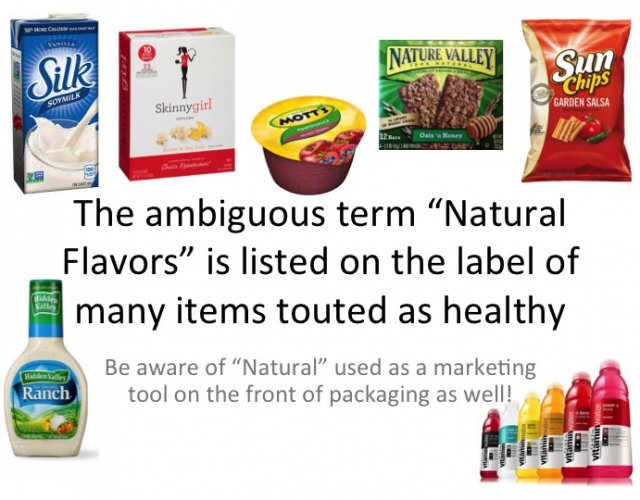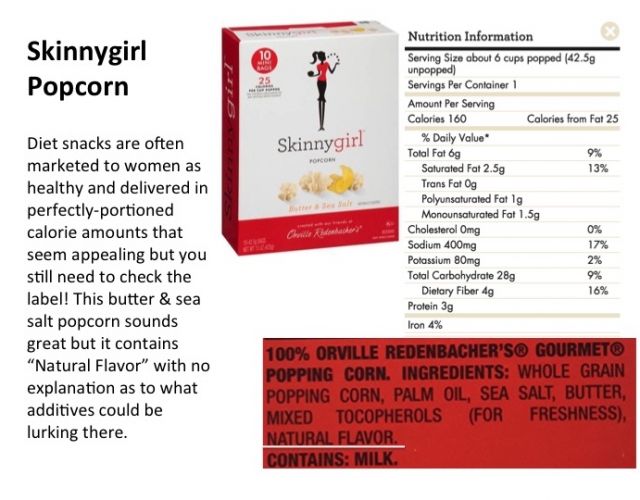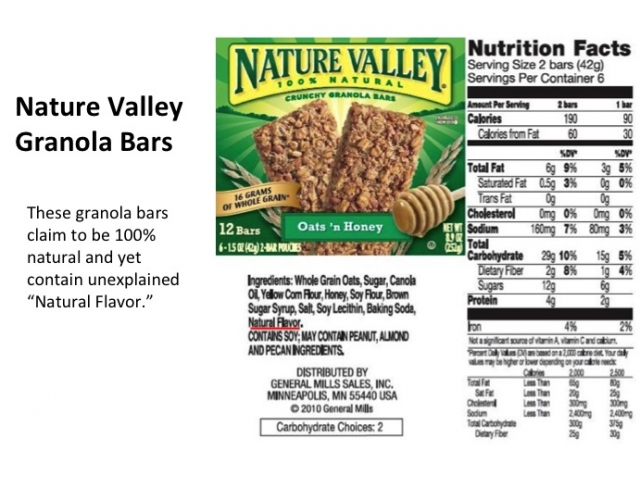If asked about the connotation of the word “natural,” descriptors like “healthy,” “fresh,” “made without chemicals” or “made in nature” come to mind. According to the Environmental Working Group, “natural flavor” is the fourth most common ingredient listed for processed food, but do we really know what this term means?
Here’s a short video that effectively uses humor to illustrate what “natural” really means.
Natural Flavors Defined
The truth is that “natural flavors” are defined so broadly that they can encompass a vast number of substances that we wouldn’t consider natural. As defined by The Food and Drug Administration (FDA) in the Code of Federal Regulations, “natural flavor” or “natural flavoring” means [quote]the essential oil, oleoresin, essence or extractive, protein hydrolysate, distillate, or any product of roasting, heating or enzymolysis, which contains the flavoring constituents derived from a spice, fruit or fruit juice, vegetable or vegetable juice, edible yeast, herb, bark, bud, root, leaf or similar plant material, meat, seafood, poultry, eggs, dairy products, or fermentation products thereof, whose significant function in food is flavoring rather than nutritional.[/quote]
What does this mean? “Natural flavors” listed on a nutrition label does not refer to any one specific kind of additive but includes any chemical or combination of flavorings derived from any of the above “edible” sources as long as they aren’t synthetically formulated. Lisa Lefferts with the Center for Science in the Public Interest (CSPI) says that:
A flavor ingredient can consist of some combination of about 2,300 different substances.
Would you believe that food manufacturers can add beaver anal gland secretions to your food and call it “natural flavors”? These secretions, known as castoreum but rarely labeled as such on packaging, are often added to ice cream and utilized for “natural” vanilla and raspberry flavoring.
If that isn’t disturbing enough, natural flavors can also include GMO ingredients, mold, fungus, bug shells, pig stomach lining and animal bones. It is daunting to think that vegans trying to avoid animal products could be inadvertently eating some of these items labeled as “natural flavoring.” In addition, wine and beer are often clarified with isinglass, which is prepared from the bladder of a sturgeon, or gelatin derived from the skin and connective tissue of pigs and cows. And you won’t find isinglass on the label of your favorite beer since no law requires it.
Russel Blaylock, M.D., author of Excitotoxins: The Taste That Kills, has written that even the controversial additive monosodium glutamate (MSG) falls under the “natural flavors” umbrella and can be added to processed foods with no mention of it on the label. MSG is the sodium salt of glutamate, described as a normal neurotransmitter in the brain by its defenders. However, when introduced to the body in high concentrations, it causes neurons to fire abnormally, literally exciting our cells to death. Food manufacturers add this cheap, concentrated form of salt to our food in order to excite our taste buds. It can make us crave sugar, and it interferes with satiety hormones like leptin.
Many popular processed foods list “natural flavors” among their ingredients as we can see in this slideshow.
Food manufacturers use this “natural” designation loosely to deceive consumers into believing questionable ingredients are healthy, fresh and wholesome.









